
In plumbing projects, you’ll work with materials like PVC, PEX, copper, galvanized steel, and cast iron—each with its own flexibility and density. While the cutting principles are similar, choosing the right tool depends on the type of pipe you’re working with.
Follow this guide to learn which tools and cutting methods are best suited for each pipe type.
1.0Preparing to Cut Pipe
Before you cut any kind of pipe or tubing, make sure you’ve taken the proper steps to ensure accuracy and safety:
- Measure the Pipe Diameter: Use a caliper or measuring tape to check the outer diameter of the pipe. This helps you choose the right size cutter for the job.
- Mark the Cut Line: Measure the desired length with a tape measure, then mark the cut location using a pencil, pen, or marker. For more precise cuts, wrap a marking line around the full circumference of the pipe.
- Secure the Pipe: Use a vise, pipe clamp, or miter box to hold the pipe firmly in place. Keeping the pipe steady while cutting helps produce cleaner, straighter results.
Tip: Before cutting, check your local plumbing codes to make sure the pipe type and fittings meet current standards and permitting requirements.
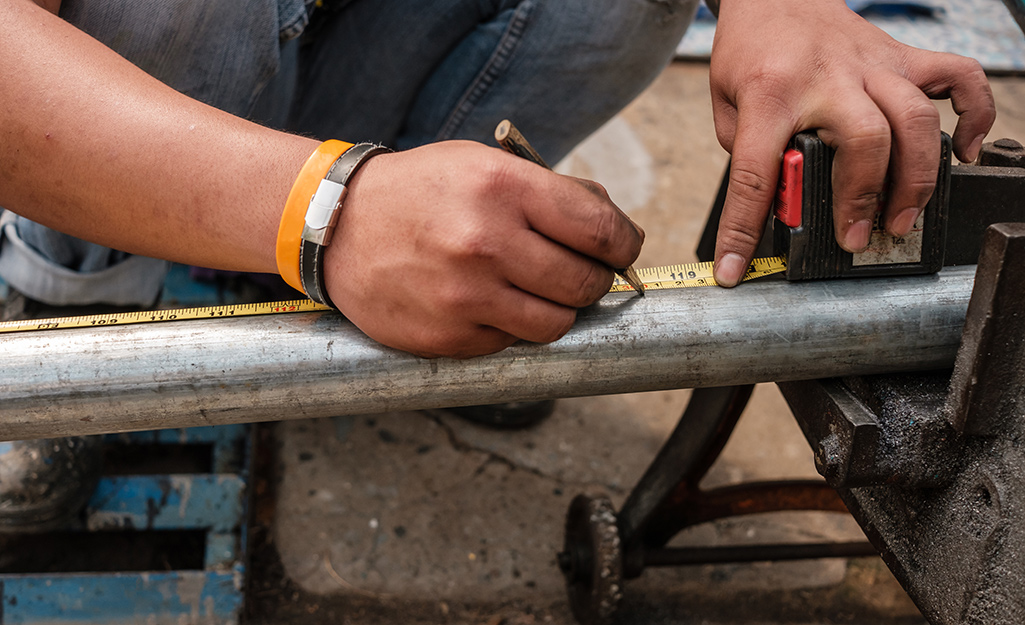
2.0How to Cut Copper Pipe
A standard copper tubing cutter works well for both rigid and flexible copper pipes. Rigid copper is common in water supply lines, while flexible copper can often be bent into shape without cutting. If you do need to cut copper, follow these steps:
- Prep the Area: Put on protective gloves and make sure your workspace is clean and safe.
- Mark the Cut Line: Use a marker to draw a clear line where you want to cut.
- Secure the Pipe: Hold the pipe firmly in place using a clamp or vise to prevent movement during cutting.
- Position the Cutter: Align the cutter’s blade with your marked line. Lightly tighten the knob so the cutting wheel scores a shallow groove on the pipe surface.
- Rotate the Cutter: Rotate the tool evenly around the pipe. After every 2–3 full turns, slightly tighten the knob to apply more pressure. Avoid over-tightening; gradual pressure leads to a cleaner cut.
- Remove the Cutter: Once the pipe is cut through, loosen the knob and remove the cutter.
- Deburr the Edge: Use a reaming tool, deburring blade, or internal pipe cleaner to remove sharp edges or burrs from inside the pipe. A smooth edge ensures a tighter seal during connection.

3.0How to Cut PVC Pipe
PVC pipes can be cut with PVC/ABS saws, hacksaws, wire saws, power miter saws, scissor-type hand cutters, ratcheting hand cutters and battery-powered cutters.
PVC pipes are widely used in plumbing, HVAC, and electrical conduit systems due to their lightweight, corrosion-resistant design. Cutting them accurately is key to tight fittings and safe system performance.
- Mark the Cut Line: Use a felt-tip marker to draw your cut line. For larger pipes, wrap painter’s tape or masking tape around the pipe and mark along the edge to keep the cut straight.
- Use a Handsaw (General Use): Line up a hacksaw or PVC pipe saw with your mark. Use smooth, steady back-and-forth strokes to cut straight through.
Safety Tip: Always hold the saw firmly and wear cut-resistant gloves to prevent slipping. - Use a Miter Saw (Precision or Bulk Cuts): Secure the pipe to a workbench. Align the blade with your cut line and let the saw reach full speed before gently lowering it through the pipe.
Safety Tip: Wear safety goggles and keep your hands clear of the blade to avoid injury from flying debris. - Use a Wire Saw (Tight Spaces): Thread the wire saw behind the pipe and position it on the marked line. Pull the saw back and forth until the pipe is cut through. This method is ideal for tight spots where power tools won’t fit.
- Inside-Cut Method (Special Cases): For pipes located inside walls or in drain systems, use a special inside pipe cutter or hole saw to cut from the inside out. This method is typically used during repairs or retrofits and requires experience or professional handling.
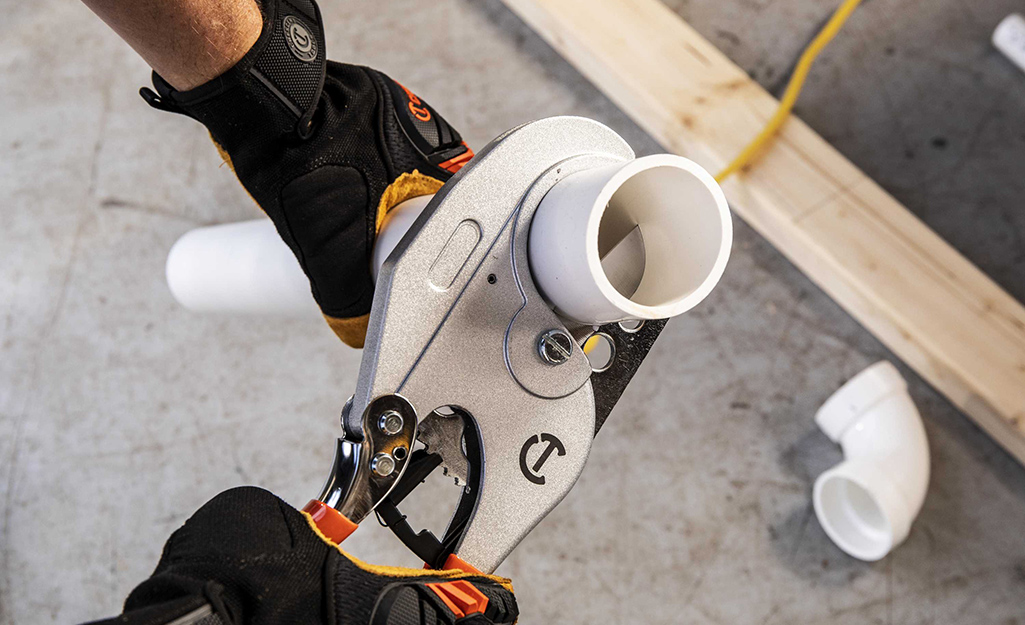
4.0How to Cut Cast Iron Pipe
Cast iron is hard and brittle, which makes it more challenging to cut than other pipe materials. You’ll need the right tools and safety precautions. Here’s a breakdown of commonly used tools and the recommended cutting method:
Common Tools for Cutting Cast Iron:
- Chain-Style Cast Iron Pipe Cutter: Highly recommended. Fast and produces clean cuts.
- Reciprocating Saw with Cast Iron Blade: A good option for tight spaces or emergency cuts.
- Carbide Grit Blade (for Angle Grinder or Circular Saw): Works well for hard cutting jobs.
- Metal-Tooth Saw Blade: Slower and not ideal for large-diameter pipes.
Steps for Using a Chain-Style Cast Iron Cutter
- Step 1 – Prep the Area:
Get a chain-style cutter.
Wear gloves, safety goggles, and hearing protection. - Step 2 – Position the Chain:
Wrap the chain fully around the pipe.
Hook the chain ends securely into the cutter handle and make sure it’s locked tight. - Step 3 – Apply Pressure:
Use the ratcheting handle to gradually tighten the chain.
Keep applying pressure until you hear a “snap”—this means the pipe has cracked clean through.
Caution: Stay clear of the break line as the pipe may snap suddenly. - Step 4 – Inspect and Clean the Cut:
Check that the cut is even.
Use a metal file to smooth out any burrs or sharp edges. This helps ensure better sealing and prevents injury.
Safety Tips:
- Make sure the surrounding area is clear before starting, as the break can be abrupt.
- Never force the cutter; too much pressure, too fast, may cause the chain to slip.
- Always wear proper safety gear—especially eye and hand protection—regardless of which cutting method you use.
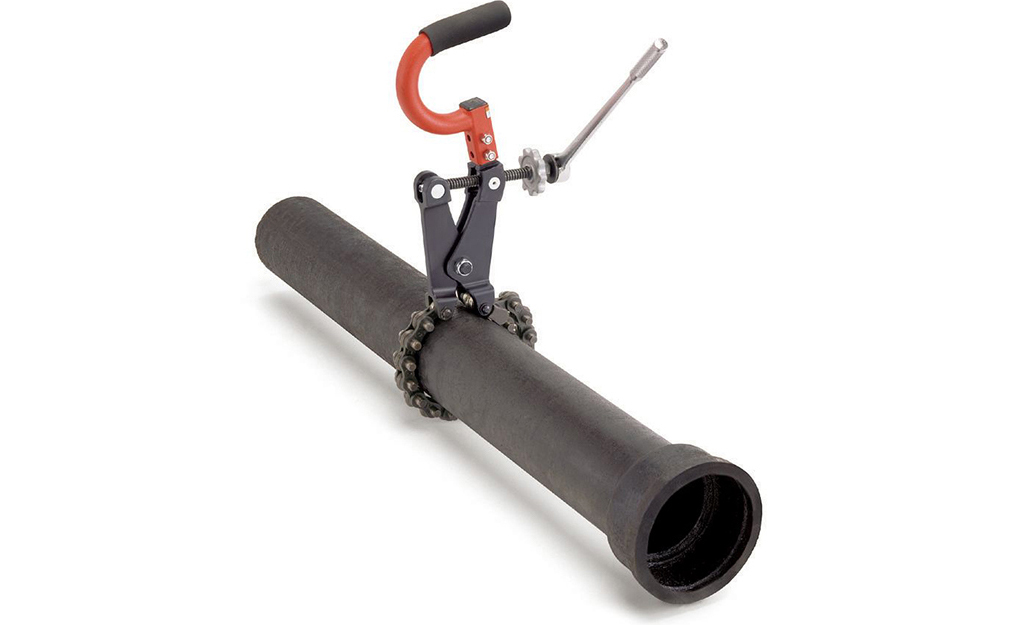
5.0How to Cut Steel Pipe
Steel pipes are commonly used in natural gas, water supply, and industrial piping systems. Common types include black steel pipe (used for gas and petroleum) and galvanized steel pipe (used for water lines due to its corrosion resistance). Always choose the right cutting tool based on your pipe type and work environment.
Common Tools and Best Use Cases:
- Pipe Cutter: Ideal for clean, straight cuts on uniform pipe when working in open spaces.
- Angle Grinder: Great for thicker or harder steel pipes; offers fast cutting speeds.
- Reciprocating Saw: Useful in tight spaces or awkward positions.
- Hacksaw: Works for small sections or basic one-off jobs.
Cutting Steps
- Step 1 – Identify Pipe Type & Mark Your Cut:
Confirm whether you’re working with black steel or galvanized steel.
Use a marker to draw your cut line. For extra accuracy, use a square or pipe guide. - Step 2 – Use a Pipe Cutter (Recommended):
Align the cutter with your mark and clamp it onto the pipe.
Rotate the tool evenly to score the surface.
After every few turns, tighten the wheel slightly and continue until the pipe is cut through. - Step 3 – Use an Angle Grinder or Reciprocating Saw (For Tough or Hard-to-Reach Areas):
Select a blade rated for metal and inspect it for cracks or wear.
Let the tool reach full speed before making contact with the pipe to prevent kickback.
Apply steady, even pressure without rocking side to side.
Wait until the blade fully stops before setting the tool down. - Step 4 – Use a Hacksaw (For Small or Emergency Cuts):
Choose a fine-tooth metal blade—never use a wood-cutting blade.
Line up with the cut mark and saw slowly with controlled strokes.
Take your time; this method is best for short, non-repetitive cuts.
Safety Tips:
- Always wear protective gear: safety glasses, cut-resistant gloves, hearing protection, and long sleeves.
- Avoid unsafe posture: never stand directly in front of the blade or beneath the pipe.
- Keep the workspace safe: ensure a dry floor, good lighting, and no flammable materials nearby.
- Watch for heat: cut surfaces may remain hot after using power tools—don’t touch immediately.
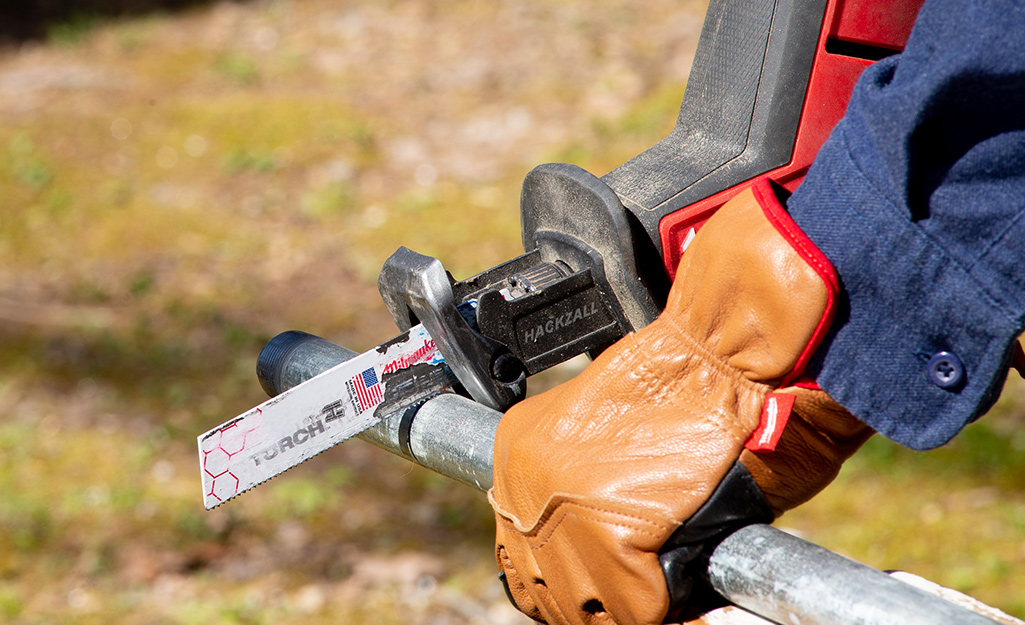
6.0How to Cut Steel Pipe in Bulk
In industrial production, construction, or prefabrication settings, high-volume steel pipe cutting requires speed, consistency, and accuracy. Using the right equipment can improve efficiency, ensure clean cuts, and reduce downstream processing time.
Recommended Equipment:
- Circular Saw Machine (for Metal):
Fast and stable. Best for cutting large quantities of uniform-diameter pipes. - Band Saw Machine:
Ideal for thick-walled or large-diameter pipes. Provides clean, continuous cuts. - Fiber Laser Pipe Cutting Machine:
Offers automated measuring, positioning, cutting, and beveling.
Suitable for round, square, oval, and other shaped steel pipes.
Delivers high precision, fast speed, and supports complex pattern cuts. - Automatic Pipe Cutting Line:
Designed for production lines. Performs automated positioning, cutting, and counting for mass throughput.
Circular Saw Machine – Operation Overview
- Preparation:
Select the right blade based on pipe diameter and wall thickness.
Set up limit stops or automatic feeders.
Clean off oil or dirt from the pipe surface to ensure a tight clamp. - Positioning:
Use a laser guide or mechanical stop to control cutting length.
Adjust blade or saw angle to ensure perpendicular cutting. - Cutting:
Bring the machine to full speed before engaging the blade.
Maintain a consistent feed rate to prevent binding or pipe deformation. - Continuous Operation:
Use auto-feed or quickly reposition pipes manually.
Maintain a steady pace to maximize output per shift.
Safety & Maintenance Tips:
- Inspect blades regularly and replace worn-out ones.
- Use chip evacuation systems to prevent metal buildup.
- Always wear goggles, cut-resistant gloves, and hearing protection.
- Never touch a moving blade or freshly cut pipe end.
Fiber Laser Pipe Cutter – Operation Overview
Step 1 – Equipment Setup:
Adjust laser power based on material and wall thickness (e.g., 1kW–6kW).
Select compatible chucks and clamps to ensure secure holding.
Check laser path, cooling unit, and dust extraction systems before operation.
Step 2 – Auto Positioning & Parameter Input:
Import cutting files or program paths using CAD/CAM software.
Input pipe type, dimensions, wall thickness, cutting path, and feed speed.
Laser head auto-focuses and aligns with the pipe centerline.
Step 3 – Cutting Process:
The feed system delivers the pipe to the cutting zone.
Laser head follows the programmed path, cutting complex shapes like slots, bevels, or V-notches.
Monitor the process in real time to prevent burn-through, rough edges, or warping.
Step 4 – Cycle Operation & Sorting:
Pipes are queued and fed automatically—no manual loading needed.
Finished parts are sorted or dropped into bins automatically.
Use barcodes or ID marking for traceability and batch management.
Laser-Specific Safety & Maintenance Tips:
- Operators must wear laser safety goggles to prevent eye damage.
- Never open the machine door during cutting to avoid laser exposure.
- Clean lenses, rails, and exhaust filters regularly to maintain beam quality.
- If idle for long periods, drain the water cooling system and seal components to protect from dust.
7.0How to Cut PEX Pipe
PEX (cross-linked polyethylene) pipe is lightweight, flexible, durable, and cost-effective. It’s commonly used in hot and cold water systems, radiant floor heating, and snow-melt installations. Cutting PEX pipe is simple and only requires the proper cutting tool.
Tools You Can Use:
Scissor-Style PEX Cutter: Ideal for quick, clean cuts on smaller-diameter pipe.
Ratchet-Style PEX Cutter: Better for thicker or stiffer pipe that requires more cutting force.
PEX Cutting Steps
- Prep the Pipe:
Uncoil the PEX pipe and try to straighten it as much as possible.
Use a marker to mark the desired cut location. - Use a Scissor-Style Cutter:
Align the blade with the marked line.
Squeeze the handles with even pressure.
If needed, slightly rotate the cutter while pressing to complete the cut cleanly. - Use a Ratchet-Style Cutter (Recommended for Larger or Rigid Pipe):
Position the blade over the mark.
Squeeze the handles incrementally, letting the ratchet mechanism apply pressure gradually.
Continue pressing until the pipe is fully cut.
Tips and Best Practices:
- The cut should be as straight and square as possible for a tight fitting.
- If needed, lightly trim any rough edges with a knife or fine file.
- Keep the cutter blades sharp to avoid crushing or tearing the pipe.
- Clean your cutting tools after use to extend their service life.
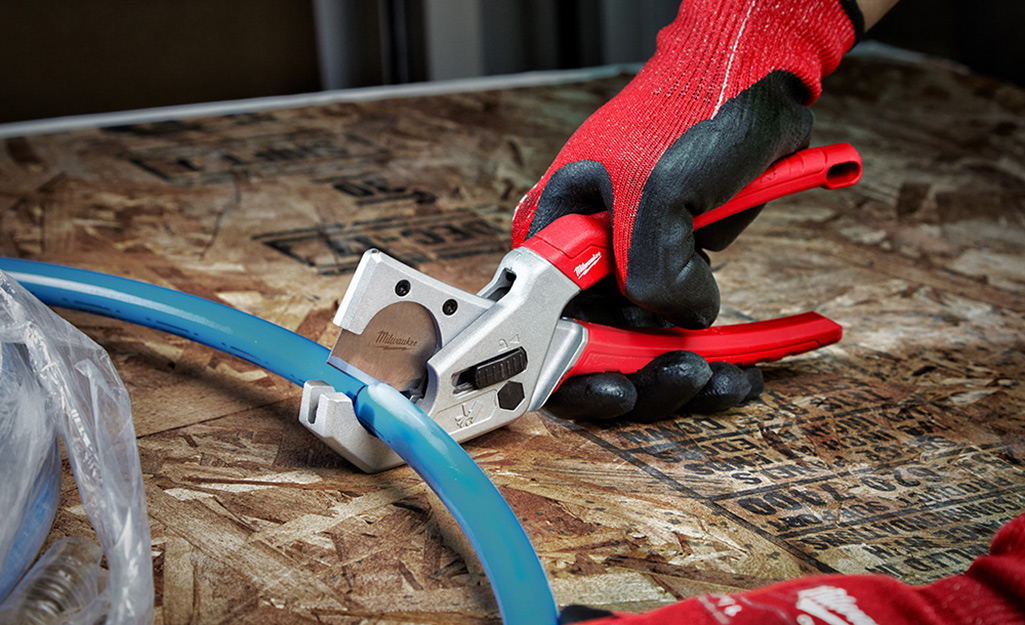
8.0Post-Cut Pipe Finishing Steps
Even if the cut seems clean, post-processing is often needed to ensure a tight, secure connection, especially to prevent leaks or fitting damage.
Post-Cut Finishing Checklist:
- Inspect the Cut:
Check both the inner and outer pipe edges for burrs or sharp spots.
Confirm the cut is straight and that the pipe isn’t crushed or distorted. - Deburr the Edges:
Use a deburring tool to clean the inside edge.
Use a knife, round file, or sandpaper to remove raised edges on the outside. - Smooth the End (if needed):
For thicker plastic or metal pipes, use a hand file to lightly smooth the edge.
This prevents injuries and improves seal performance. - Clean the Surface:
Wipe the cut end with a dry cloth or use compressed air to remove dust and debris.
A clean cut improves the seal and prevents particles from entering the system. - Get Ready for Installation:
Once the end is properly prepared, proceed with fittings, welding, threading, or pressure testing as required.
Important Reminders:
- Burrs can lead to poor sealing, damage to fittings, or added flow resistance.
- Wear gloves when handling metal pipe ends to avoid cuts.
- Be careful not to distort the pipe while deburring or smoothing—it needs to stay round for a proper seal.
9.0Pipe Cutting Safety Precautions
No matter what type of pipe you’re cutting—PVC, PEX, steel, or cast iron—safety must always come first. Follow these precautions to avoid accidents, injuries, and material waste during the cutting process.
General Safety Guidelines:
- Ensure Proper Ventilation:
Especially important when working indoors or using power tools. Good airflow helps disperse dust and harmful particles. - Clear the Work Area:
Remove tripping hazards from the floor.
Avoid cutting near wet surfaces, clutter, or flammable materials. - Secure the Pipe:
Always clamp the pipe in place using a vise, pipe wrench, or weighted fixture.
If needed, ask someone to help stabilize the pipe during cutting. - Wear Protective Gear:
Use heavy-duty work gloves to prevent cuts, abrasions, or heat burns.
Wear safety goggles to shield your eyes from flying metal chips, plastic shards, or sparks.
Wear long sleeves and pants to protect exposed skin from sharp edges and tool contact.
Use hearing protection when operating loud tools like angle grinders or reciprocating saws. - Inspect Tools Before Use:
Check that all tools are in good working condition. Blades should be sharp, clean, and free of cracks or looseness.
Start the power tools before making contact with the pipe to confirm smooth operation.
Never operate power tools with wet hands—this increases the risk of electric shock. - Keep Others at a Safe Distance:
Make sure children, pets, and bystanders stay away from the work zone.
This is especially critical during high-risk operations such as snapping a cast iron pipe with a chain cutter.
Additional Reminders:
- Do not rush or force the cut—this can cause the blade to bind, slip, or break.
- Unsure how to use a tool? Read the user manual or ask a professional before starting.
- Clean up all tools, scraps, and debris immediately after cutting to maintain a safe workspace.
By following these safety measures, you can prevent injuries and improve both efficiency and cutting accuracy.
Remember: Safe cutting starts with proper preparation.
References
https://www.homedepot.com/c/ah/how-to-cut-pipe-and-tubing/9ba683603be9fa5395fab90182d97f90
https://www.lowes.com/n/how-to/how-to-cut-pipe-and-tubing





